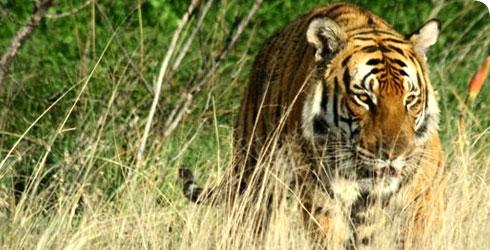Conservation
Conservation status
2009 IUCN Red List of Threatened Species category: critically endangered (possibly extinct in the wild)
The South China tiger is the most critically endangered of all of the living tiger subspecies. Its current status is uncertain.
Some scientists believe there is no viable wild population left and consider the subspecies to be functionally extinct. It is generally believed that if a wild population does still exist it includes less than 30 animals.
3 other tiger subspecies were lost to extinction in the 20th century. If the South China tiger follows suit, it would mean that 4 out of the 8 tiger subspecies have been wiped out forever.
Around 80 South China tigers are thought to exist in captivity.
Threats
South China tigers were once considered pests by the Chinese government. This status led to them being hunted to the brink of extinction in the wild. However, in 1977 it became illegal to hunt them.
Currently the biggest threats to any that remain in the wild are:
- destruction of their prey base
- poaching
- population fragmentation
- loss of habitat due to conversion for livestock or commercial tree farms
What is being done to try to save the South China tiger?
The Chinese State Forestry Administration is supporting 2 parallel programmes to help re-establish the South China tiger in the wild. It is hoped that together these projects will result in self-sustaining populations of the tigers in forest habitats with sufficient prey.
- Nature reserves
This programme involves establishing special nature reserves in suitable areas to help the recovery of wild populations. It is a long-term effort being developed together with the South China Tiger Advisory Office and will involve habitat recovery, removal of threats to prey and prey breeding, as well as tiger reintroductions. - Captive breeding and rewilding
Another organisation, Save China’s Tigers, is collaborating on a scheme to teach a selection of captive-bred South China tiger cubs to hunt live prey on a private reserve in South Africa. The offspring of these trained tigers will then be released onto pilot reserves in China. The first cub was born in 2007, the first to be born outside of China.
Unfortunately inbreeding is a significant concern for these tigers. When the scheme was officially approved in 2005, the captive population of South China tigers consisted of around 60 individuals in China, all descended from just 6 animals. This means there is very limited genetic diversity available for a successful breeding programme.
